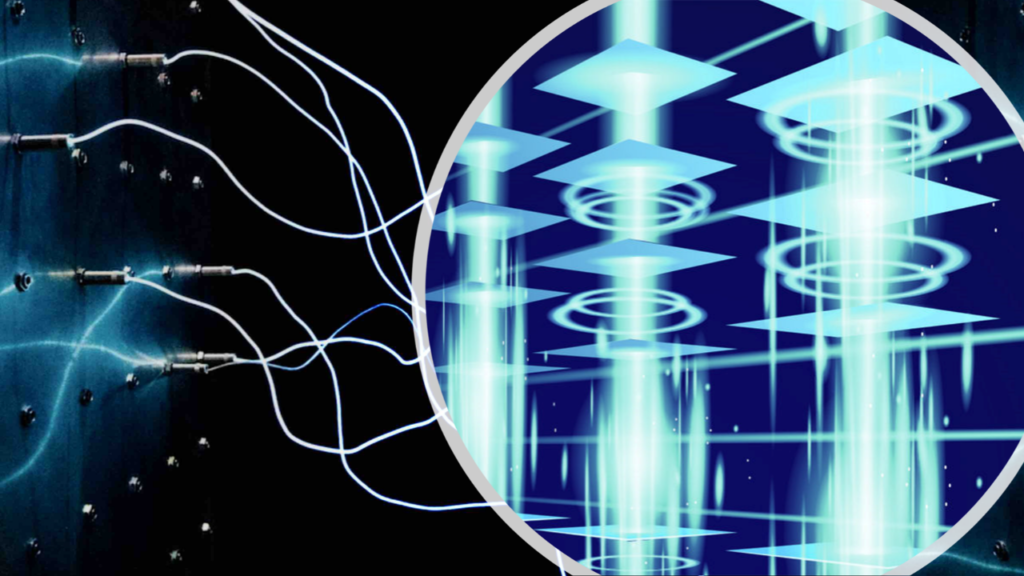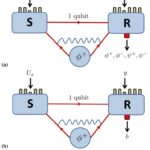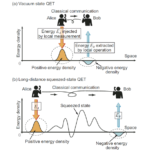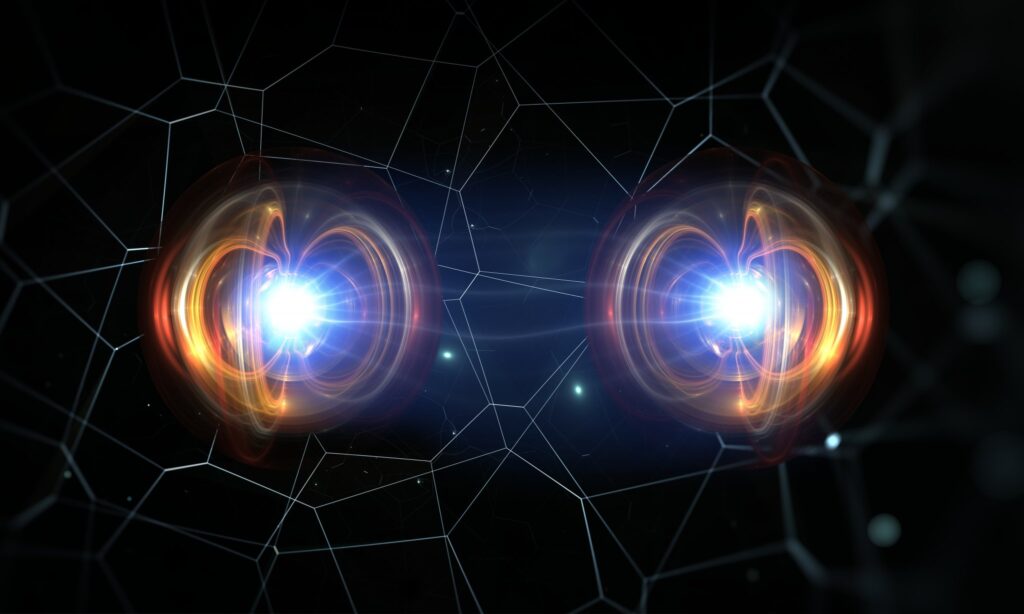
In a groundbreaking development, scientists have successfully achieved quantum energy teleportation (QET) across multi-qubit systems using W-state entanglement. This advancement not only extends the capabilities of quantum communication but also opens new avenues for efficient energy transfer at the quantum level.
Understanding Quantum Energy Teleportation

Quantum energy teleportation is a protocol that allows the transfer of energy between distant locations without the physical transmission of energy carriers. Unlike traditional energy transfer methods, QET leverages quantum entanglement and local operations combined with classical communication (LOCC) to achieve energy redistribution.
The Role of W-State Entanglement
W-state entanglement involves a specific type of multipartite entangled state where a single excitation is delocalized over multiple qubits. This configuration is particularly robust against qubit loss, making it ideal for practical implementations of QET in multi-qubit systems.
The Breakthrough Experiment

Researchers from North South University have designed and experimentally demonstrated the first multi-qubit QET protocol using W-state entanglement. They executed three-, four-, and five-qubit circuits on both noiseless simulators and IBM superconducting hardware. In each scenario, a single sender injected energy E₀, which was then deterministically and decrementally harvested by several remote receivers. This confirms that energy introduced at one node can be redistributed among many entangled subsystems at light-speed-limited classical latency.
Implications for Quantum Networks
This successful demonstration of QET in multi-qubit systems has significant implications:
- Energy-Aware Quantum Networks: The ability to teleport energy across multiple nodes can lead to the development of quantum networks that are not only information-efficient but also energy-efficient.
- Advancements in Quantum Computing: Integrating QET protocols can enhance the performance and scalability of quantum computers by enabling efficient energy distribution among qubits.
- Foundations for Quantum Thermodynamics: Understanding and controlling energy flow at the quantum level lays the groundwork for the emerging field of quantum thermodynamics.
Challenges and Future Directions

While this achievement marks a significant milestone, several challenges remain:
- Scalability: Extending QET protocols to larger qubit systems requires addressing issues related to decoherence and error rates.
- Integration with Existing Technologies: Seamlessly incorporating QET into current quantum communication and computing infrastructures will necessitate further research and development.
- Security Considerations: Ensuring the security of energy transfer in quantum networks is paramount, especially for applications in quantum cryptography.
The successful implementation of quantum energy teleportation using W-state entanglement in multi-qubit systems represents a significant leap forward in quantum science. As researchers continue to explore and refine these protocols, we can anticipate transformative advancements in quantum communication, computing, and energy transfer technologies.




1 thought on “Quantum Energy Teleportation Achieved in Multi-Qubit Systems Using W-State Entanglement”